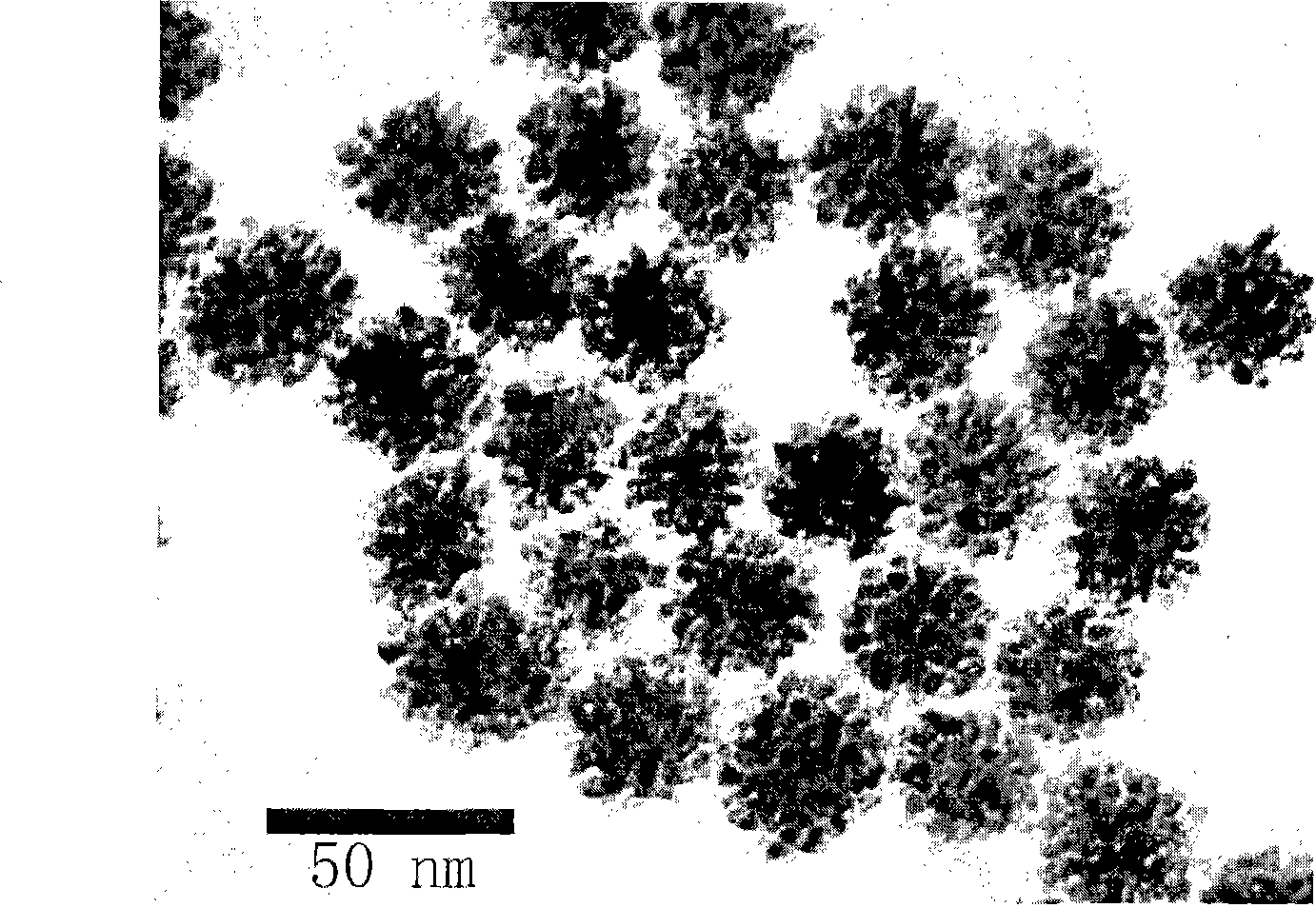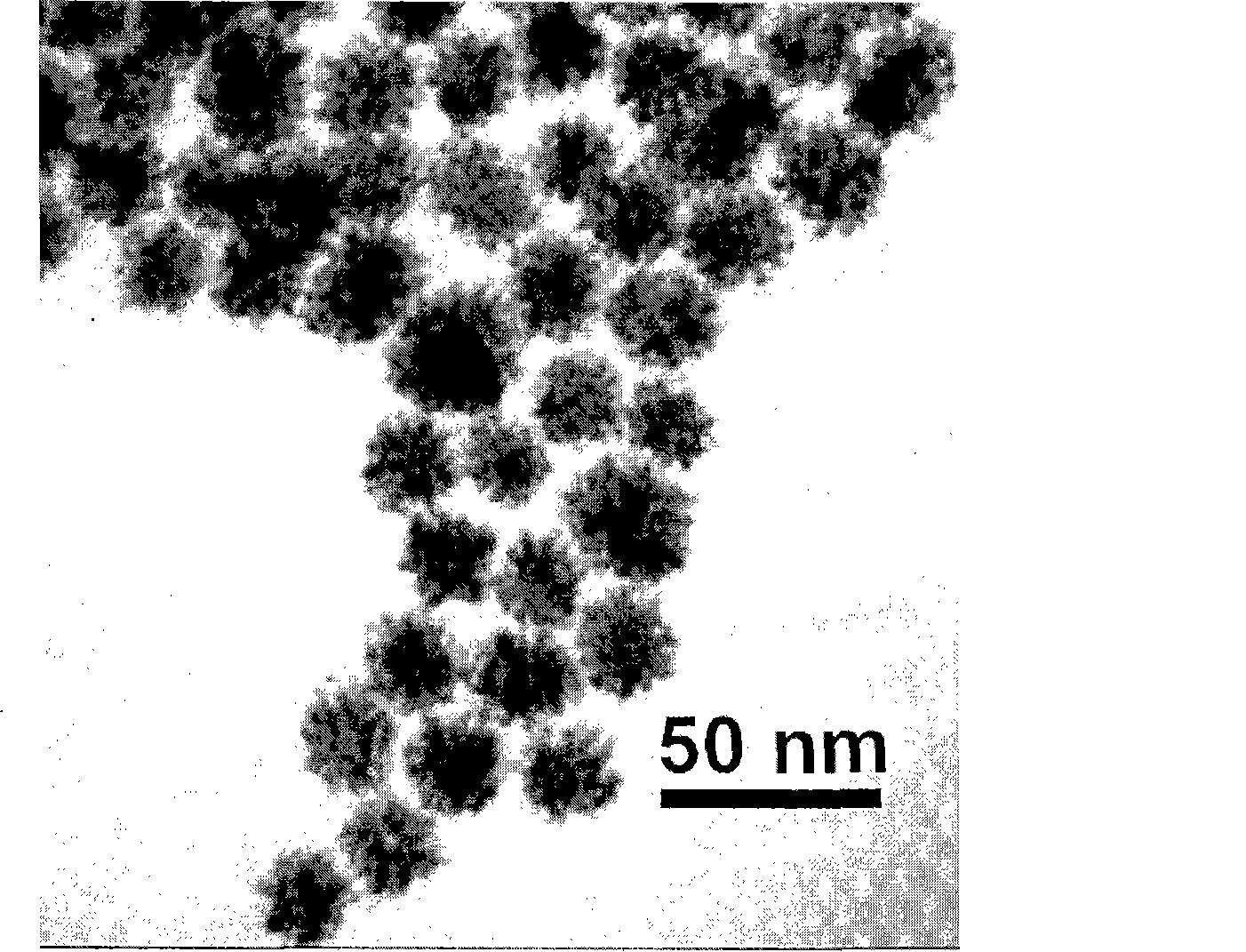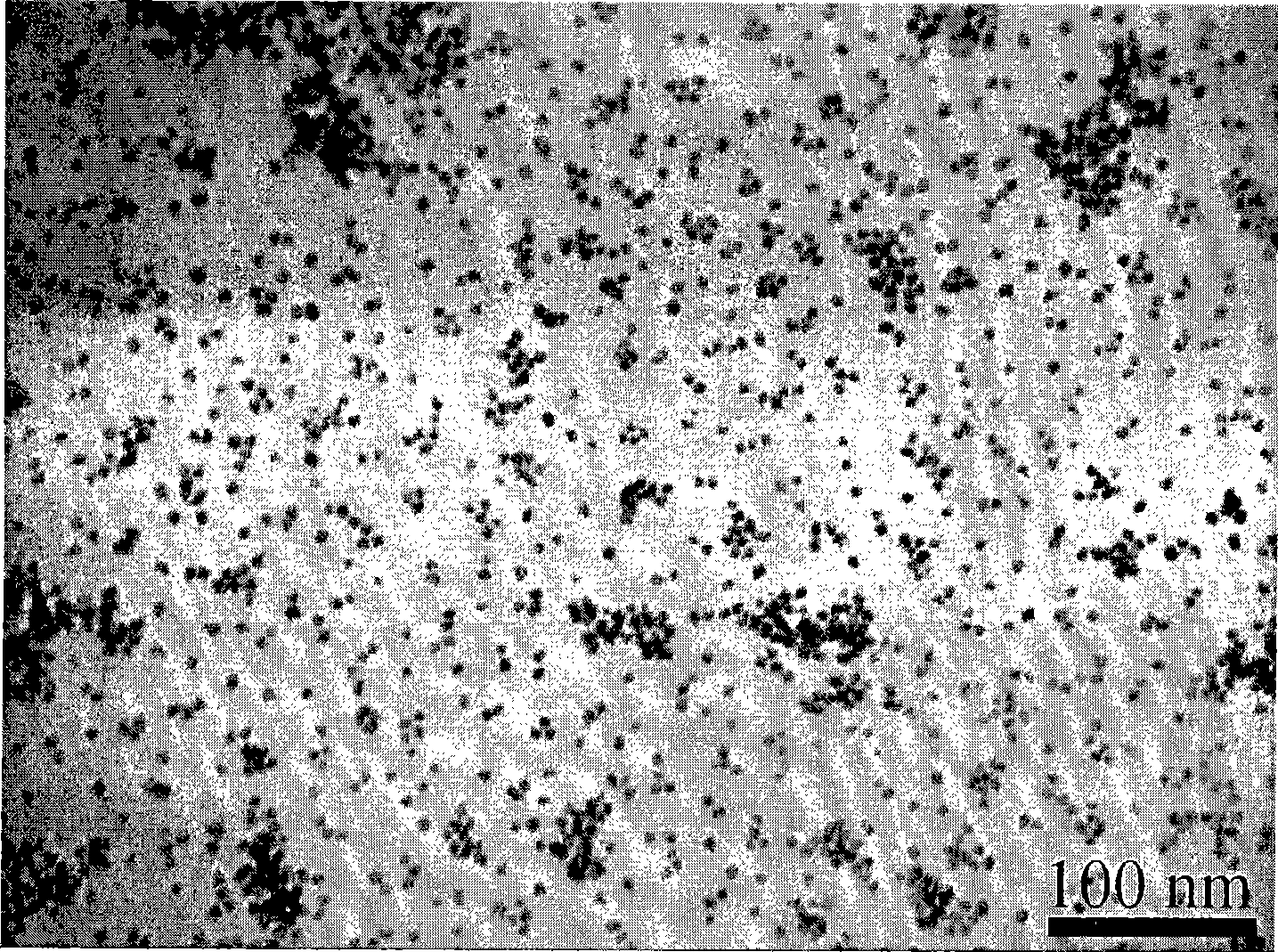Method for preparing monodisperse flower-shaped gold/platinum hybrid nano particles having different particle diameters
A technology of hybrid nanoparticles and gold nanoparticles, applied in chemical instruments and methods, metal/metal oxide/metal hydroxide catalysts, physical/chemical process catalysts, etc.
- Summary
- Abstract
- Description
- Claims
- Application Information
AI Technical Summary
Problems solved by technology
Method used
Image
Examples
Embodiment 1
[0012] a. Preparation of 25 nm gold nanoparticles
[0013] Put 0.5-2 ml of 24.3mM / LHAuCl 4 The aqueous solution was added to 50-200 ml of distilled water and heated to boiling, and then 0.75-3 ml of 34.3 mM / L sodium citrate aqueous solution was quickly added to obtain 25 nm gold nanoparticles after heating for 10 minutes;
[0014] b, with the gold nanoparticles obtained above as seeds, with 0.1M / L ascorbic acid as green reducing agent, with 19.3mM / L H 2 PtCl 6 As a platinum source, the molar ratio of platinum to gold is 2:1, 0.1M / L ascorbic acid and 19.3mM / L H 2 PtCl 6 The volume ratio is 0.8-2, and heated at 100° C. for 15 minutes to obtain monodisperse flower-shaped gold / platinum hybrid nanoparticles with a particle size of 35 nm.
Embodiment 2
[0016] a. Preparation of 13nm gold nanoparticles
[0017] In 2.12 mL of 24.3mM / LHAuCl 4 The aqueous solution was added to 50 ml of distilled water and heated to boiling, then 5.7 ml of 34.3 mM / L sodium citrate aqueous solution was added rapidly. After heating for 10 minutes, gold nanoparticles of 13 nm were obtained;
[0018] b, with the gold nanoparticles obtained above as seeds, with 0.1M / L ascorbic acid as green reducing agent, with 19.3mM / L H 2 PtCl 6 As a platinum source, the molar ratio of platinum to gold is 2:1, 0.1M / L ascorbic acid and 19.3mM / L H 2 PtCl 6 The volume ratio is 0.8-2, and heated at 100° C. for 15 minutes to obtain monodisperse flower-shaped gold / platinum hybrid nanoparticles with a particle size of about 20 nanometers.
Embodiment 3
[0020] a. Preparation of 3 nm gold nanoparticles
[0021] In 0.5-2ml 24.3mM / L HAuCl 4 Add the aqueous solution to 50-200 ml of distilled water, then add 0.75-3 ml of 34.3 mM / L sodium citrate aqueous solution, add 0.5-3 ml of 0.1 M / L sodium borohydride aqueous solution under stirring conditions, and stir overnight to obtain about 3 nm of gold nanoparticles;
[0022] b, with the gold nanoparticles obtained above as seeds, with 0.1M / L ascorbic acid as green reducing agent, with 19.3mM / L H 2 PtCl 6 As a platinum source, the molar ratio of platinum to gold is 2:1, 0.1M / L ascorbic acid and 19.3mM / L H 2 PtCl 6 The volume ratio is 0.8-2, and heated at 100° C. for 15 minutes to obtain monodisperse flower-shaped gold / platinum hybrid nanoparticles with a particle size of about 6 nanometers.
PUM
| Property | Measurement | Unit |
|---|---|---|
| particle diameter | aaaaa | aaaaa |
| particle diameter | aaaaa | aaaaa |
| particle diameter | aaaaa | aaaaa |
Abstract
Description
Claims
Application Information
 Login to View More
Login to View More - Generate Ideas
- Intellectual Property
- Life Sciences
- Materials
- Tech Scout
- Unparalleled Data Quality
- Higher Quality Content
- 60% Fewer Hallucinations
Browse by: Latest US Patents, China's latest patents, Technical Efficacy Thesaurus, Application Domain, Technology Topic, Popular Technical Reports.
© 2025 PatSnap. All rights reserved.Legal|Privacy policy|Modern Slavery Act Transparency Statement|Sitemap|About US| Contact US: help@patsnap.com



